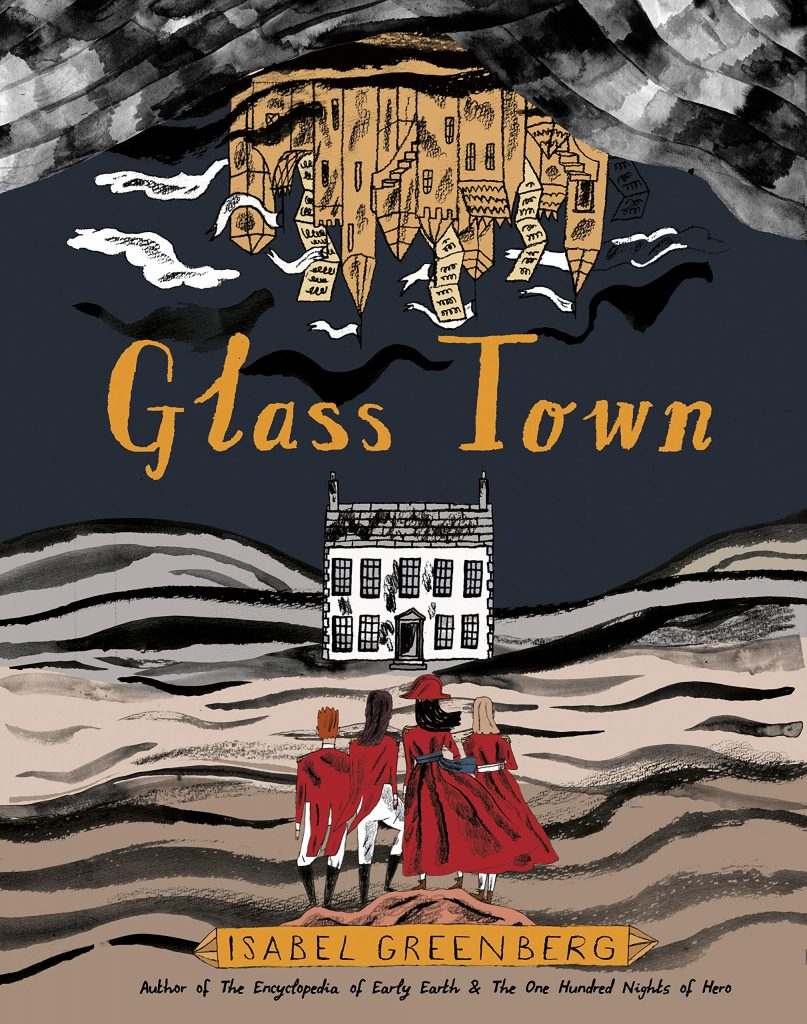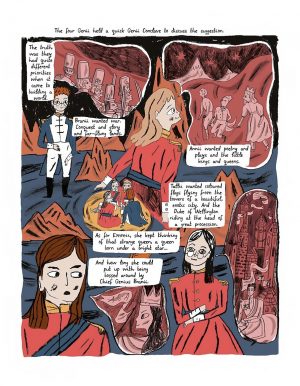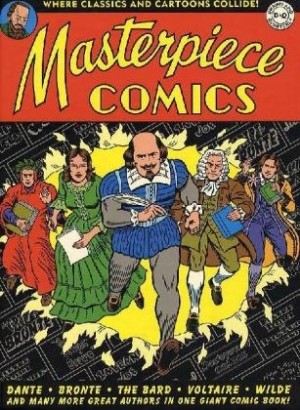Review by Ian Keogh
Novels by Anne, Charlotte and Emily Brontë remain in print over 150 years after they were written, yet their first work concerned the shared world of Glass Town, with brother Branwell also contributing to stories about the fictional inhabitants. These stories weren’t considered anything more than juvenilia, not worth preserving as an entity when the Brontë archives were separated, and it wasn’t until the 21st century that a comprehensive edition saw print.
As Isabel Greenberg’s previous work has been the inventive retelling of myths in fictional settings, there would seem an obvious attraction to Glass Town. Just as she’s recontextualised familiar stories before, she here takes the Brontë’s world and population to construct her own fictions around them. Not just them though, but also their authors, pulling biographical details from their lives into this meta-fictional exercise.
Greenberg is leisurely in setting up Glass Town, spending the first quarter of the book among the young Brontës and their playthings. It’s here that the limitations of Greenberg’s flat art become far more apparent than on her earlier books. Those dealt with ever-shifting fictional locations, but the eccentricity of her people is less suited to the continual illustration of a fixed historical point.
While the original work wasn’t always coherent, there being four different Glass Towns for starters, different people guiding the destinies of the cast, and Greenberg adding herself to that mix, makes for unpredictable character development. As filtered through Greenberg, the Glass Town cast become a bonkers pastiche of Victorian romantic literature featuring a philandering Duke of Wellington, while the Brontë sisters are shown as fading and incomplete when separated from their world. Ultimately only Charlotte survives to be drawn into the fictional world one final time, with the plot literally lost and the cast left to their own devices.
Glass Town is funny, certainly original and ambitious, but ultimately not a story to be cherished as The Encyclopedia of Early Earth or The One Hundred Nights of Hero.





